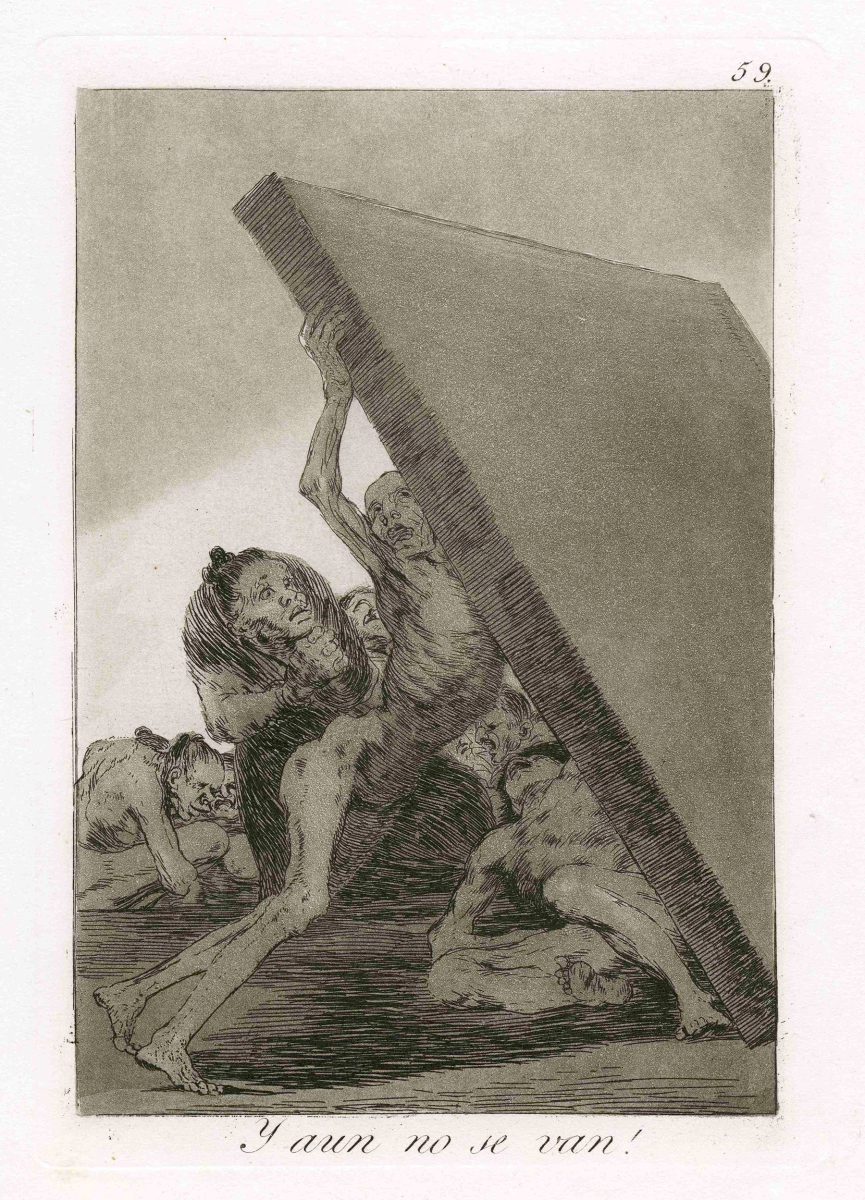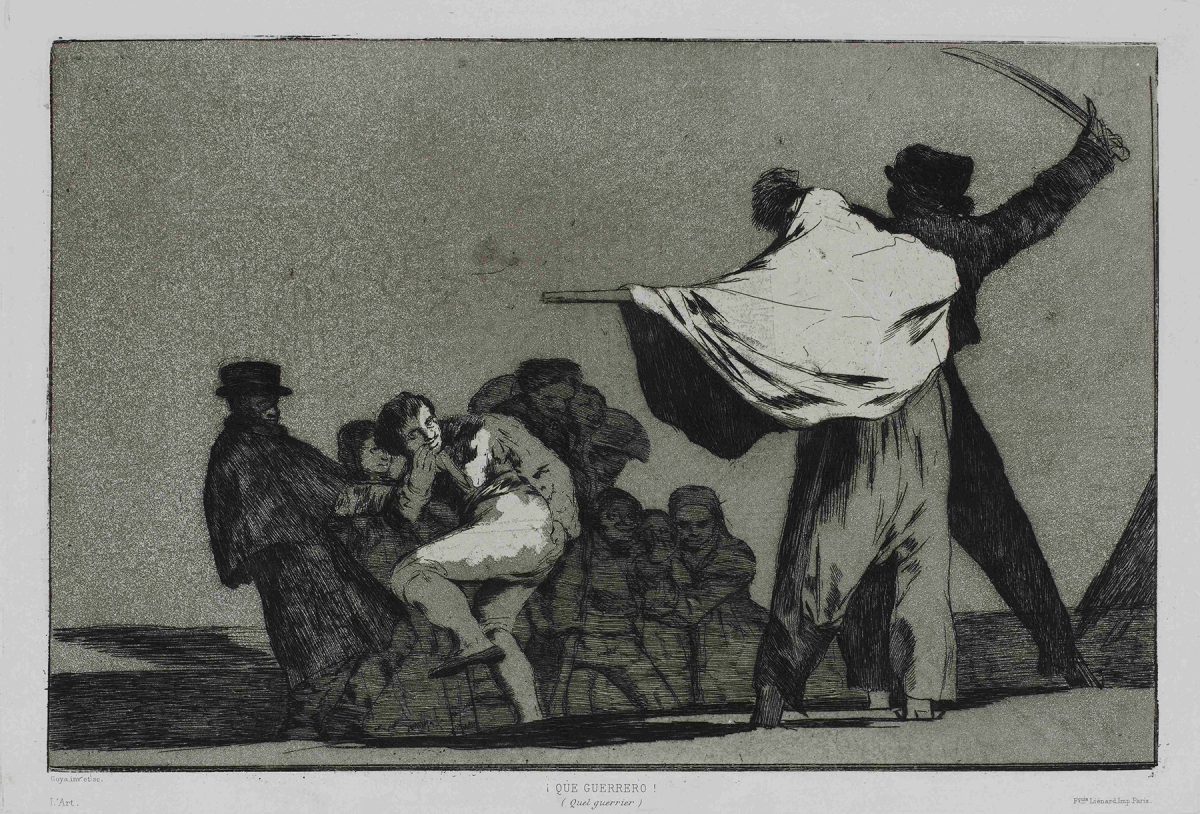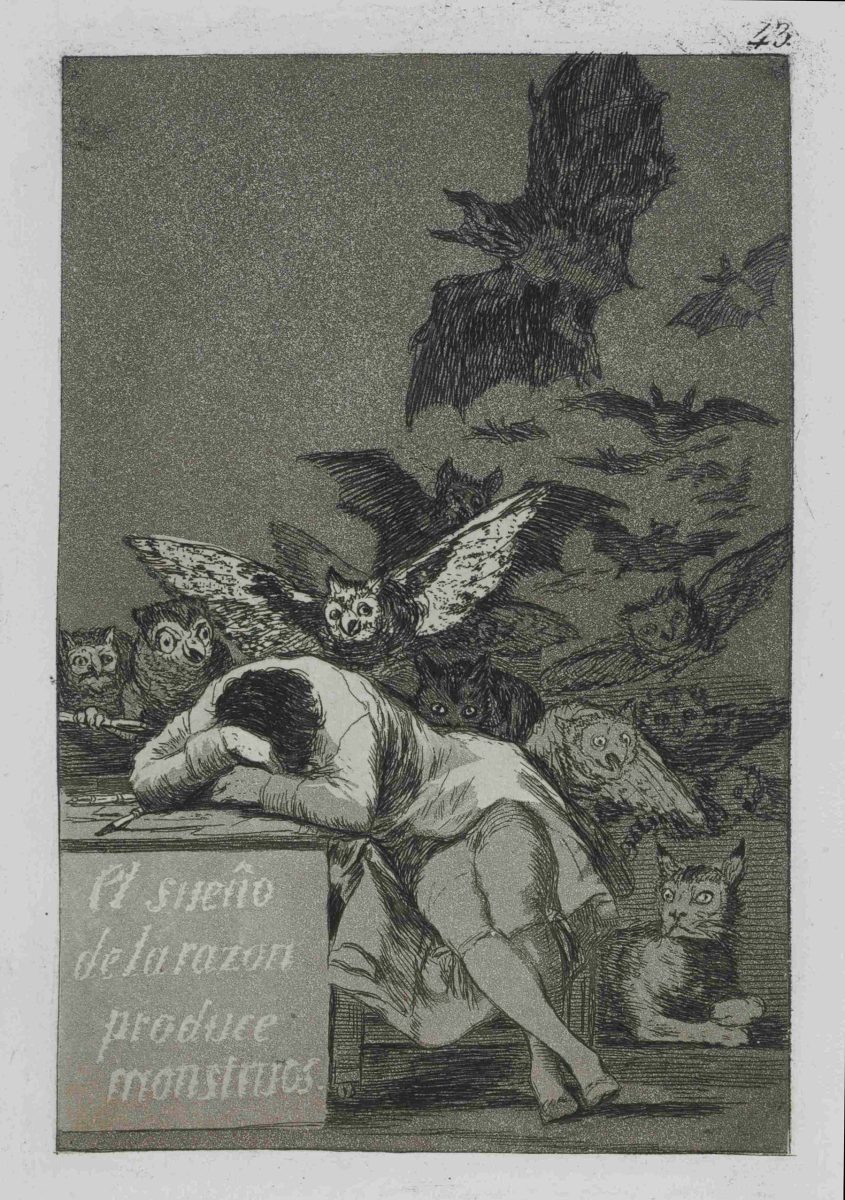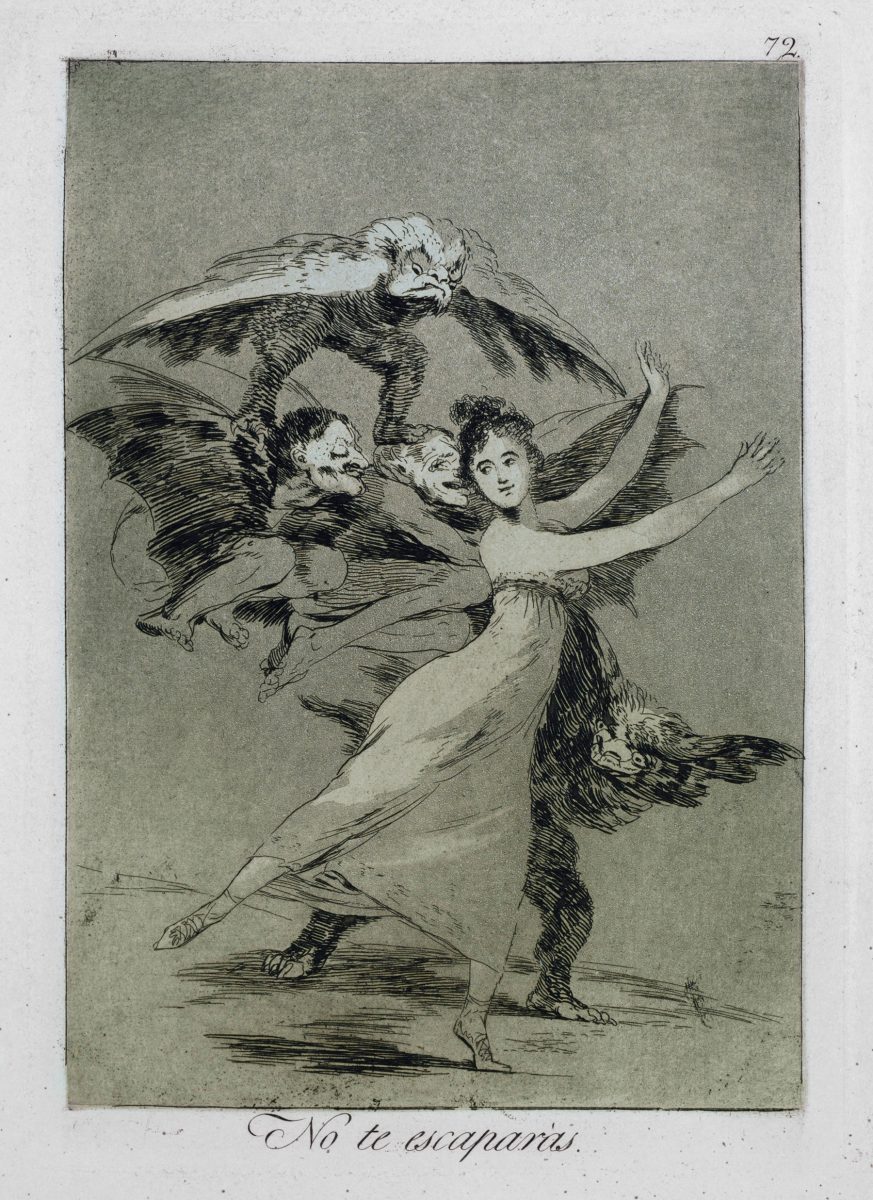The painter and printmaker Francisco Goya was a constant source of inspiration for the artists and collectors who were close to the Fondation William Cuendet & Atelier de Saint Prex. Goya’s mastery of aquatint, as well as his visionary power and political resolve, led Gérard de Palézieux to first acquire Los Caprichos, the Spanish artist’s album of 81 prints, which he later donated to the Foundation. In this famous series, done in aquatint and etching, Goya gave free rein to his imagination, drawing inspiration from human vice to create brilliant and ferocious satires on the foibles of man. A few years later, the board members of the Fondation decided to supplement this collection with a handful of other prints by Goya, pulled from either Los Caprichos or his later Proverbs series.
The last great representative of a tradition in Spanish painting that goes back to El Greco, Francisco Goya is also an artist of extraordinary modernity, which is particularly apparent in his engraved work. Born in 1746 in Aragon as the son of a master gilder, Goya grew up in Zaragoza, where he completed his first apprenticeship in drawing. After twice failing to obtain a scholarship to the Academy of Fine Arts in Madrid, he decided to continue his artistic education in Italy, where he stayed for two years, from 1769 to 1771. On his return to Spain, Goya was commissioned to paint several frescoes. In 1775, he moved to Madrid, where he began painting cartoons for the Royal Tapestry Factory, work that would constitute his primary employment for many years. At the same time, he became one of the most popular portraitists among the Spanish aristocracy, which expanded his reputation. He was admitted to the Academy of Fine Arts in 1780 before being appointed painter to the king in 1786. Goya's striking portraits of the royal family are surprising in their total lack of concession to vanity. In 1793, Goya was suddenly struck down by a mysterious and grave illness, from which he only narrowly escaped with his life. That illness marked the beginning of a deafness that was to weigh heavily on Goya in his final years. After this important life event, alongside his official commissions Goya began to work on personal projects drawn primarily from the imagination. His final period was marked by the series of so-called Pinturas negars (Black Paintings), which he painted on the walls of his country house, Quinta del Sordo (1819-1823). In 1824, following the return of the monarchy and the repression of liberals in Spain, Goya left the country and went into exile in Bordeaux, where he produced his last masterpieces, before dying in 1828.
Goya's printmaking oeuvre, which comprises several series, some of which were produced over many years, begins with a 1778 series of etchings based on paintings by Velázquez. But his real breakthrough in this field came twenty years later, with Los Caprichos (1799), Goya’s suite of etchings enhanced with aquatint that would exert a strong influence on the Romantic imagination. A decade later, amidst Napolean’s occupation of Spain and the ensuing war of independence, Goya created hisDesastres de la guerra (Disasters of War), a series of prints whose great emotional force, like that of his famous paintings El dos de mayo (The Second of May) andEl tres de mayo (The Third of May 1808),both completed in1814, seem to denounce the violence of war. After a series on the history of tauromaquia (Bullfighting)in 1816, Goya returned to an approach similar to that of Los Caprichos in his Disparates (Proverbs) series, whose enigmatic plates are striking for their strange and inventive compositions. At the end of his life, Goya began experimenting in lithography, a medium whose invention dates to the last years of the eighteenth century. Goya's lithographs Los toros de Burdeos (Bordeaux Bulls) are among the first true masterpieces of this novel technique.




